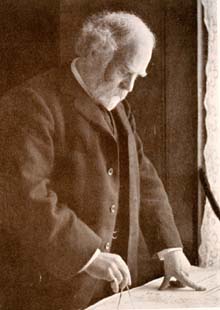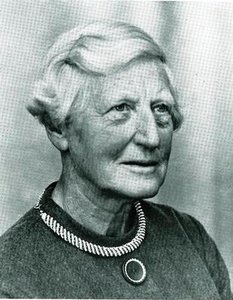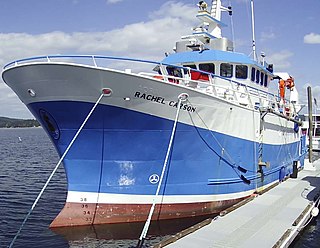Great Cumbrae is the larger of the two islands known as The Cumbraes in the lower Firth of Clyde in western Scotland. The island is sometimes called Millport, after its main town.

Little Cumbrae is an island in the Firth of Clyde, in North Ayrshire, Scotland. It lies south of Great Cumbrae, its larger neighbour.

Millport is the only town on the island of Great Cumbrae in the Firth of Clyde off the coast of mainland Scotland, in the council area of North Ayrshire. The town is 4 miles (6 km) south of the ferry terminal that links the island to the Scottish mainland.

North Ayrshire is one of 32 council areas in Scotland. The council area borders Inverclyde to the north, Renfrewshire and East Renfrewshire to the northeast, and East Ayrshire and South Ayrshire to the east and south respectively. The local authority is North Ayrshire Council, formed in 1996 with the same boundaries as the district of Cunninghame which existed from 1975 to 1996.

The Firth of Clyde is the mouth of the River Clyde. It is located on the west coast of Scotland and constitutes the deepest coastal waters in the British Isles. The firth is sheltered from the Atlantic Ocean by the Kintyre peninsula, which encloses the outer firth in Argyll and Ayrshire. The Kilbrannan Sound is a large arm of the Firth of Clyde, separating the Kintyre Peninsula from the Isle of Arran. Within the Firth of Clyde is another major island – the Isle of Bute. Given its strategic location at the entrance to the middle and upper Clyde, Bute played a vital naval military role during World War II.

Rothesay is the principal town on the Isle of Bute, in the council area of Argyll and Bute, Scotland. It lies along the coast of the Firth of Clyde. It can be reached by ferry from Wemyss Bay, which offers an onward rail link to Glasgow. At the centre of the town is the 13th-century ruin Rothesay Castle, unique in Scotland for its circular plan.

The County of Bute, also known as Buteshire, is a historic county and registration county of Scotland.

Cunninghame is a former comital district of Scotland and also a district of the Strathclyde Region from 1975 to 1996.

Sir John Murray was a pioneering Canadian-born Scottish oceanographer, marine biologist and limnologist. He is considered to be the father of modern oceanography.

Field Studies Council is an educational charity based in the UK, which offers opportunities for people to learn about and engage with the outdoors.
The University Marine Biological Station Millport (UMBSM) was a higher education institution located on the island of Great Cumbrae in the Firth of Clyde, Scotland, and run by the university of London (of which it was a central academic body). It closed in 2013 and is now Millport Field Centre, run by the Field Studies Council.
David Robertson FLS, FGS (1806–1896) was a Scottish naturalist and geologist who founded the University Marine Biological Station, Millport.

The Scottish Association for Marine Science (SAMS) is one of Europe's leading marine science research organisations, one of the oldest oceanographic organisations in the world and is Scotland's largest and oldest independent marine science organisation.
Scottish Marine Station may refer to:

Sheina Macalister Marshall was a Scottish marine biologist who dedicated her life to the study of plant and animal plankton. She was an authority on the copepod Calanus. She worked at the Marine Biological Station at Millport, Cumbrae in Scotland from 1922-1964.
Ronald Ian Currie FRSE CBE was a Scottish marine biologist. He was known generally as Ron Currie.
Andrew Picken Orr FRSE ARIC (1898–1962) was a 20th-century Scottish oceanographer and was an expert on phytoplankton and copepod biology.

R/V Rachel Carson is a research vessel owned and operated by the University of Washington's School of Oceanography, named in honor of the marine biologist and writer Rachel Carson. The vessel is part of the UNOLS fleet. It is capable of conducting operations within the Salish Sea and coastal waters of the western United States and British Columbia. She can accommodate up to 28 persons, including the crew, for day operations, while up to 13 can be accommodated for multi-day operations.













